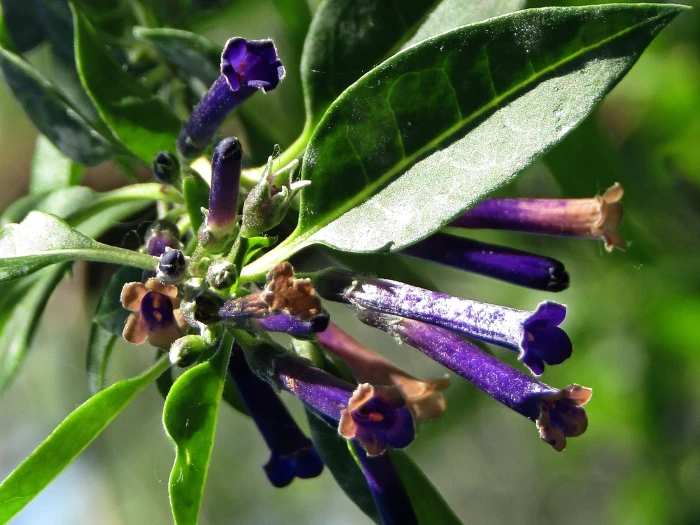South American Desert-Thorn
(Lycium cestroides)
South American Desert-Thorn (Lycium cestroides)
/
/

Candela Castro
CC BY 4.0
Image By:
Candela Castro
Recorded By:
Copyright:
CC BY 4.0
Copyright Notice:
Photo by: Candela Castro | License Type: CC BY 4.0 | License URL: http://creativecommons.org/licenses/by/4.0/ | Rights Holder: Candela Castro | Publisher: iNaturalist | Date Created: 2019-11-03T03:19:52-08:00 |

























Estimated Native Range
Climate Requirements for North Ridgeville, Ohio
| This Plant | Your Site | Plant Suitability for Your Location | ||
|---|---|---|---|---|
| • Precipitation | 5" - 83" | 36" | Aquatic | Aquatic |
| • High Temp. | 66°F - 95°F | 83°F | Your summer temperatures are normal for this plant. | Excellent |
| • Low Temp. | 22°F - 62°F | 18°F | Your winter temperatures may be too cold for this plant | Too cold |
This plant may not grow well at your location - your precipitation is too high.
Summary
Lycium cestroides, commonly known as the South American Desert-thorn, is a deciduous shrub native to the arid and semi-arid regions of South America, including Argentina, Paraguay, and Brazil. It typically inhabits open scrublands and dry forest margins where it is adapted to harsh, dry conditions. This plant usually reaches a height of 3-6 feet (1-2 meters) with a similar spread, and it has a dense, thorny structure that provides cover for wildlife. The flowers of Lycium cestroides are small, tubular, and pale purple to white, blooming sporadically throughout the year in its native range. The fruits are small red berries that may attract birds.
In cultivation, Lycium cestroides is valued for its drought tolerance and its ability to thrive in challenging environments, making it suitable for xeriscaping and as a barrier plant due to its thorny branches. It is also used in wildlife gardens to provide shelter for birds and other animals. Gardeners should plant it in full sun and in well-draining sandy or loamy soils. It requires minimal water once established, reflecting its adaptation to arid conditions. While it is not commonly afflicted by diseases, its thorns can make maintenance somewhat challenging.CC BY-SA 4.0
In cultivation, Lycium cestroides is valued for its drought tolerance and its ability to thrive in challenging environments, making it suitable for xeriscaping and as a barrier plant due to its thorny branches. It is also used in wildlife gardens to provide shelter for birds and other animals. Gardeners should plant it in full sun and in well-draining sandy or loamy soils. It requires minimal water once established, reflecting its adaptation to arid conditions. While it is not commonly afflicted by diseases, its thorns can make maintenance somewhat challenging.CC BY-SA 4.0
Plant Description
- Plant Type: Shrub
- Height: 3-9 feet
- Width: 3-6 feet
- Growth Rate: Moderate
- Flower Color: Purple
- Flowering Season: Spring, Summer
- Leaf Retention: Deciduous
Growth Requirements
- Sun: Full Sun
- Water: Low
- Drainage: Medium, Fast
Common Uses
Drought Tolerant, Low Maintenance
Natural Habitat
Open scrublands and dry forest margins
Other Names
Common Names:
Scientific Names: Lycium cestroides, Acnistus cestroides, Cestrum herzogii, Lycium cestroides var. normale, Pederlea cestroides
GBIF Accepted Name: Lycium cestroides